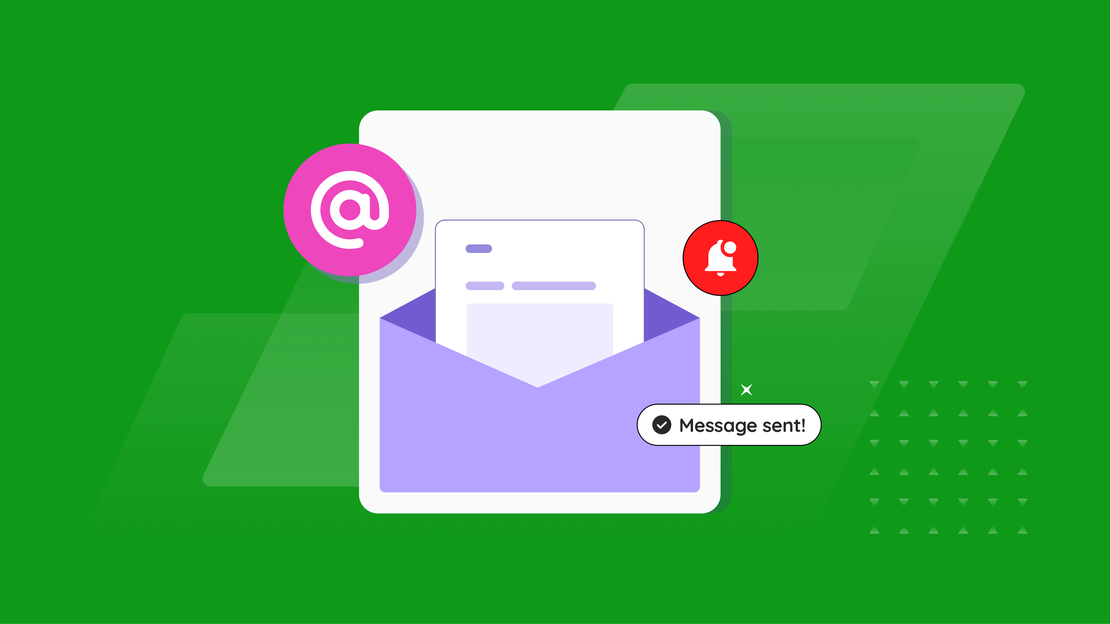Email Marketing: How To Get Started As An Sme Or Freelancer
Email marketing is fun! It’s one of the most effective ways to maintain personal contact with your customers and leads while building strong relationships. Don’t let technical challenges or unsubscribes discourage you—there’s a solution for everything.
But where do you start? What tools do you need? And what should you send to your subscribers? Find out in this article.

Table Of Contents
What is email marketing?
Email marketing is the process of sharing valuable information with your audience via email. This can include updates, event announcements, new blog posts, personal stories, exclusive discounts, and more. People subscribe to your list, and you collect their email addresses with the goal of increasing engagement and driving sales.
Why use email for your marketing?
Email remains one of the most powerful marketing tools. Why? Because you have full control over your audience and platform. Unlike social media, you’re not at the mercy of algorithms, paid ads, or declining organic reach.
With email marketing, you have more autonomy and freedom—something we highly value!
Getting started with automated email marketing in 6 steps
1. Choose an email marketing tool that suits you
Before you can send emails, you need software to collect addresses and manage your list. The right tool makes it easy to create a signup form for your website.
No website? No problem. Many tools, including ours, offer standalone landing pages where you can collect email addresses.
Our Email Marketing Tool provides everything you need—it’s intuitive, affordable, and allows for automation. Plus, it integrates seamlessly with websites, webshops, and our CRM system, making it an essential tool for any small to medium-sized business.
We believe in the power of our tools, but why not try them yourself? Sign up for our BETA Program and test them for free!
2. Build an email list with lead magnets
No list, no email marketing. But people won’t sign up without a reason. Here are a few ways to attract subscribers:
- Offer a free giveaway (lead magnet) Think of an e-book, white paper, checklist, mini-course, or discount code
- Use a pop-up or signup form on your website Pop-ups can be annoying, but when used strategically (e.g., appearing after 30 seconds or when someone is about to leave), they’re highly effective
- Promote your lead magnet in your email signature and on social media A small effort with a big impact
3. Send your first email (and avoid writer’s block)
Your first email doesn’t need to be a literary masterpiece—keep it simple and authentic. Here are a few examples of emails you can send as soon as someone signs up:
- Introduce yourself (who you are and why they’re receiving this email)
- Send your giveaway (if you’ve offered one)
- Ask for a response (for example, “What challenges are you facing in this area?”)
Tip: Write as if you’re emailing a friend. Speak in your own voice. It might take some practice, but remember: practice makes progress!
4. Create a content plan (to stay consistent with your emails)
Consistency is key to success. Unfortunately, many entrepreneurs start strong but lose momentum. Why? Is it because they run out of time?
We believe it’s more about not having a strategy. Without a strategy, you’re forced to come up with something to write each time, which can feel stressful, leading you to procrastinate or stop altogether.
Make it easy on yourself by starting with a simple strategy:
- Determine your frequency Will you email once a week, every two weeks, or once a month? There’s no perfect frequency—choose what’s sustainable for you
- Set recurring headings For example, share an inspiring story, a helpful tip, a customer case study, or a behind-the-scenes look. Make a list of topics so you always have something to write about
- Work ahead Schedule your emails in advance! Set aside an afternoon (or an entire day) to write four emails and schedule them
5. Automate your emails
Automation allows you to send emails without constantly thinking about them. Here are a few ways to automate:
- Introduce yourself Send a series of automated emails introducing you and your business to new subscribers
- Remind customers of abandoned carts If you run an online shop, let our Email Marketing Tool automatically send a reminder email to customers who’ve added items to their cart but haven’t completed their purchase
- Send birthday discounts Delight your customers with a special birthday offer sent automatically. (You’ll need their date of birth, which you can easily track in our CRM system)
6. Check your statistics—but don’t stress about it
In the beginning, you may not have many subscribers. Then, after sending your first email, what happens? People unsubscribe! While this can feel discouraging, it’s completely normal. A good unsubscribe rate is around 0.5%.
So, don’t worry too much about it—just keep an eye on your statistics. Which emails are getting opened? What’s being clicked on? These numbers can help you learn and improve, making your future newsletters more successful.
Additionally, it’s important to avoid clickbait and minimize the use of AI-generated texts (like from ChatGPT), especially if you’re aiming to build genuine relationships with your readers.
Instead, focus on:
- Building customer and brand loyalty by providing consistent, valuable information
- Creating authentic two-way communication
- Improving the quality of your content
- Sharing stories that resonate with your target audience
- Encouraging your readers to think and take action
Starting with small steps
Email marketing can start simple and small—it doesn’t have to be complicated. The most important thing is to begin. Create a compelling lead magnet, use our Email Marketing Tools and CRM, collect email addresses, and turn your readers into loyal customers!